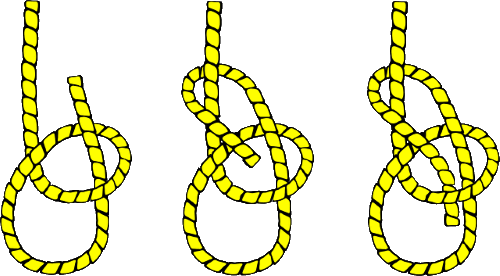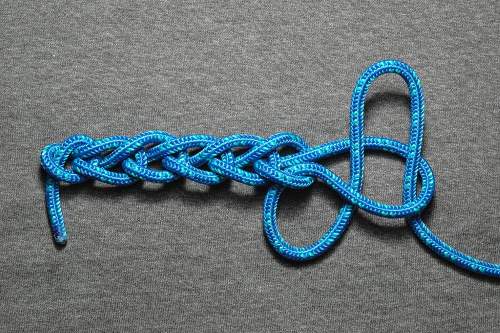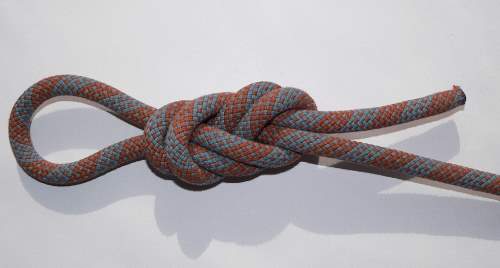There are several very popular knots that every outdoor lover, mountaineer or sailor should be aware of. The purpose of this article is to show you the four knots you should definitely know. Learn how to make them at home with this quick tutorial. Here is how to tie these knots.
4 Popular Knots You Need to Know
How to tie a Bowline Knot
Start by making a loop in the rope. It has to overlap on the top. Insert the end of the rope through the hole, then around the back side and back through the hole. Now pull.
The Bowline is probably the most popular knot, which has been used a lot for decades by all sorts of outdoor enthusiasts such as climbers and sailors. It’s wise to leave the tag end long to make the knot more secure. You can also include a stopper knot.
The benefits of this knot is that it is very secure, it doesn’t jam and can be tied using only one hand.
The best way to learn the Bowline is to create a story about it. There is one story that helps novices remember how it’s done. It goes like this: there is this rabbit that is in a hole. Suddenly, it comes out of it and reaches a tree. The rabbit then goes around it and gets back to the hole. I’m not sure if this helps, but you can always come up with another story that will help you remember how to tie the Bowline.
How to Tie a Chain Sinnet
This knot is very easy to make. Start by finding the mid point of your rope and make a loop. Pull through slightly but make sure it’s tight enough. The next step is to grab the end of the rope and insert it into the loop to create another loop. Keep doing this until you work all the way round the end of the rope. When you get to the end, tie another knot.
Chain sinnet is often used to shorten or tidy cables and ropes. It’s very easy to manage stuff using this technique. The Chain sinnet knot can make any rope much more durable. Furthermore, climbers often use it to keep their ropes from getting tangled. It is also called Single Trumpet Braid, Crochet Stitch, Monkey Chain, Daisy Chain, Monkey Braid, Chain Braid, etc. The best part about this knot is that it is easy to make, as it requires little dexterity.
How to a Tie Figure-Eight Knot
Take a rope and drop its tail end under. Start by making a bend. It’s also called a bight. Grabbing the tail, place it around the bend. Now take the end tail again and send it through the hole.
Another way to do this: grab the rope and make a loop in the end using the tail. Wrap the end around the rope. Now insert the end tail into the hole to finish the knot.
The figure-eight knot is used both by climbers and sailors. The downside of this knot is that it jams under strain, but the good part is it can be easily undone and it doesn’t bind. The purpose of this type of knot is to act as a stopper knot. This knot is better than the Overhand knot, but generally there are other better stoppers than figure 8.
How to Make a Double Overhand Knot
Start by making a loop in the rope. Take the end tail and send it through the loop. Now pass the loop through the end. Tighten well.
Similarly to the Bowline and Figure 8, the double overhand knot is used as a stopper. The benefits of this knot is that it can be used with other knots to increase their security. For example, you can use it with the Bowline and Figure 8.
This is one of the most important knots because it is the basis of the Fisherman’s knot, Angler’s loop, Simple noose, Water knot, Reef knot and others.
Other useful resources:
Survival MD (Best Post SHTF Medical Survival Guide Ever)
Blackout USA (EMP survival and preparedness guide)
Backyard Innovator (All Year Round Source Of Fresh Meat,Vegetables And Clean Drinking Water)
Conquering the coming collapse (Financial advice and preparedness )
Liberty Generator (Easy DIY to build your own off-grid free energy device)
Backyard Liberty (Easy and cheap DIY Aquaponic system to grow your organic and living food bank)
Bullet Proof Home (A Prepper’s Guide in Safeguarding a Home )
Family Self Defense (Best Self Defense Strategies For You And Your Family)
Sold Out After Crisis (Best 37 Items To Hoard For A Long Term Crisis)



